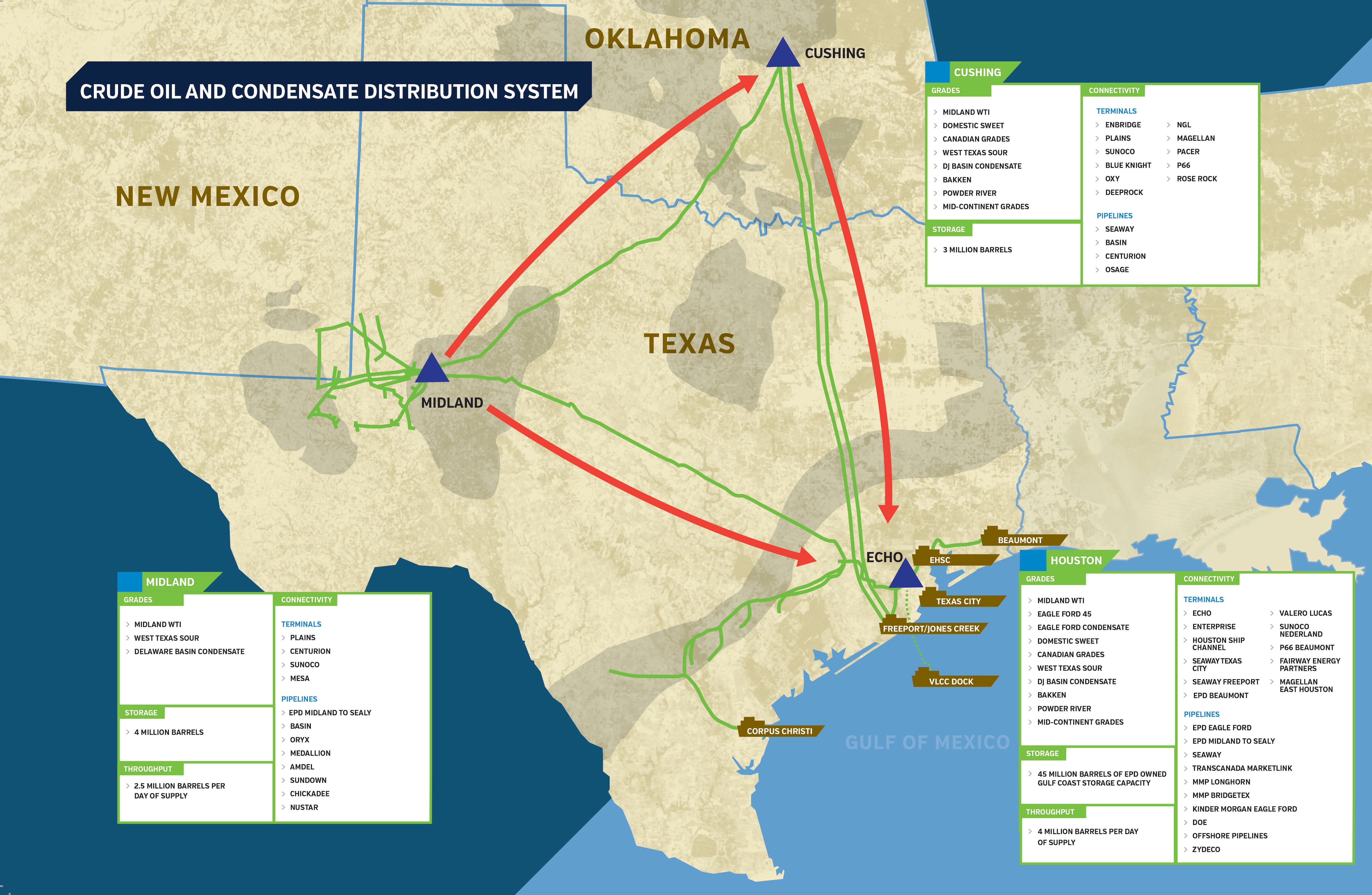
Since
the lifting of a decades-old ban on crude exports at the end of 2015,
Houston has emerged as a major physical crude oil trading hub,
overtaking the country’s primary crude benchmark (West Texas
Intermediate, or “WTI”) pricing power long held in Cushing, Oklahoma due
to access to major pipelines that run through it and ample storage
space.
The surge in crude oil production can be tied to the shale boom,
particularly in the Permian Basin in West Texas and New Mexico, where
vast amounts of crude oil flow directly to the Gulf Coast – oftentimes
bypassing Cushing altogether – to destinations such as Asia, Europe and
Latin America.
Traders and market observers say WTI crude at Houston is a preferred
futures contract hub over WTI Cushing because it better reflects global
market balance and offers a more liquid market for export customers.
Since the lifting of the crude oil export ban, U.S. crude exports
have surged nearly 350%, from 490,000 barrels per day (bbl/d) in January
2016 to a record 2.2 MMbbl/d in June 2018, according to the U.S. Energy
Information Administration (EIA).
Rising oil production in the Permian Basin, which is estimated at
around 3.5 MMbbl/d, along with increased U.S. light sweet crude exports
to overseas customers, have prompted the launch of new physical futures
contracts in Houston that are set to debut later this year.
In fact, the U.S. port district of Houston-Galveston earlier this
year began exporting more crude oil than it imported for the first time
on record, according to EIA statistics. In April 2018, crude oil exports
from Houston-Galveston surpassed crude oil imports by 15,000 bbl/d. In
May 2018, the difference between crude oil exports and imports increased
substantially to 470,000 bbl/d.
On July 17, 2018, the Intercontinental Exchange Inc. (“ICE”)
announced plans to launch in the third quarter of this year a physically
delivered Permian WTI crude oil futures contract, deliverable in
Houston. According to ICE, the new futures contract “is designed to provide price discovery, settlement and delivery at Magellan Midstream Partners LP’s terminal in East Houston.”
The contract is expected to provide ample liquidity for traders and
brokers seeking flexible hedging and trading opportunities for export
shipments.
Meanwhile, CME Group on September 24, 2018, announced that it intends
to offer a new WTI Houston crude oil futures contract with three
physical delivery locations on the Enterprise Houston system, pending
regulatory review. WTI Houston crude oil futures will be listed with and
subject to the rules of NYMEX, beginning with the January 2019 contract
month.
The new WTI Houston crude oil futures contract expands CME Group’s
already robust suite of crude oil futures and options and will
complement its global benchmark NYMEX WTI Light Sweet Crude Oil futures.
Participants will have the flexibility to make or take delivery of U.S.
light sweet crude oil at the Enterprise Crude Houston (“ECHO”) terminal, Enterprise Houston Ship Channel (“EHSC”) or Genoa Junction through the new contract.
Enterprise has a network of 19 ship docks along the U.S. Gulf Coast
and is the largest exporter of crude oil in the U.S. and the ideal
provider of delivery points for this physical WTI Houston futures
contract, according to CME Group.
Through its network of pipelines, storage and marine terminals, the
firm has the capability to handle the flow of more than 4 MMbbl/d of
crude oil. Participants will also benefit from access to a diverse group
of refiners, storage facilities and export facilities through the
Enterprise network.
What We’re Hearing
Opportune LLP’s Derivative Valuation group has heard very little from
our existing clients about the new WTI Permian crude oil contracts
delivered into Houston. Unfortunately, this is very common as we often
deal with transactions that have already been executed.
That being said, we routinely see examples of hedging mismatches. For
instance, some companies have marketing agreements that sell WTI at
Cushing and are erroneously hedged with Brent crude contracts. These
pricing relationships tend to deteriorate over time and eventually
result in both losses on production and the hedge itself. These costly
mistakes can easily be avoided.
No comments:
Post a Comment